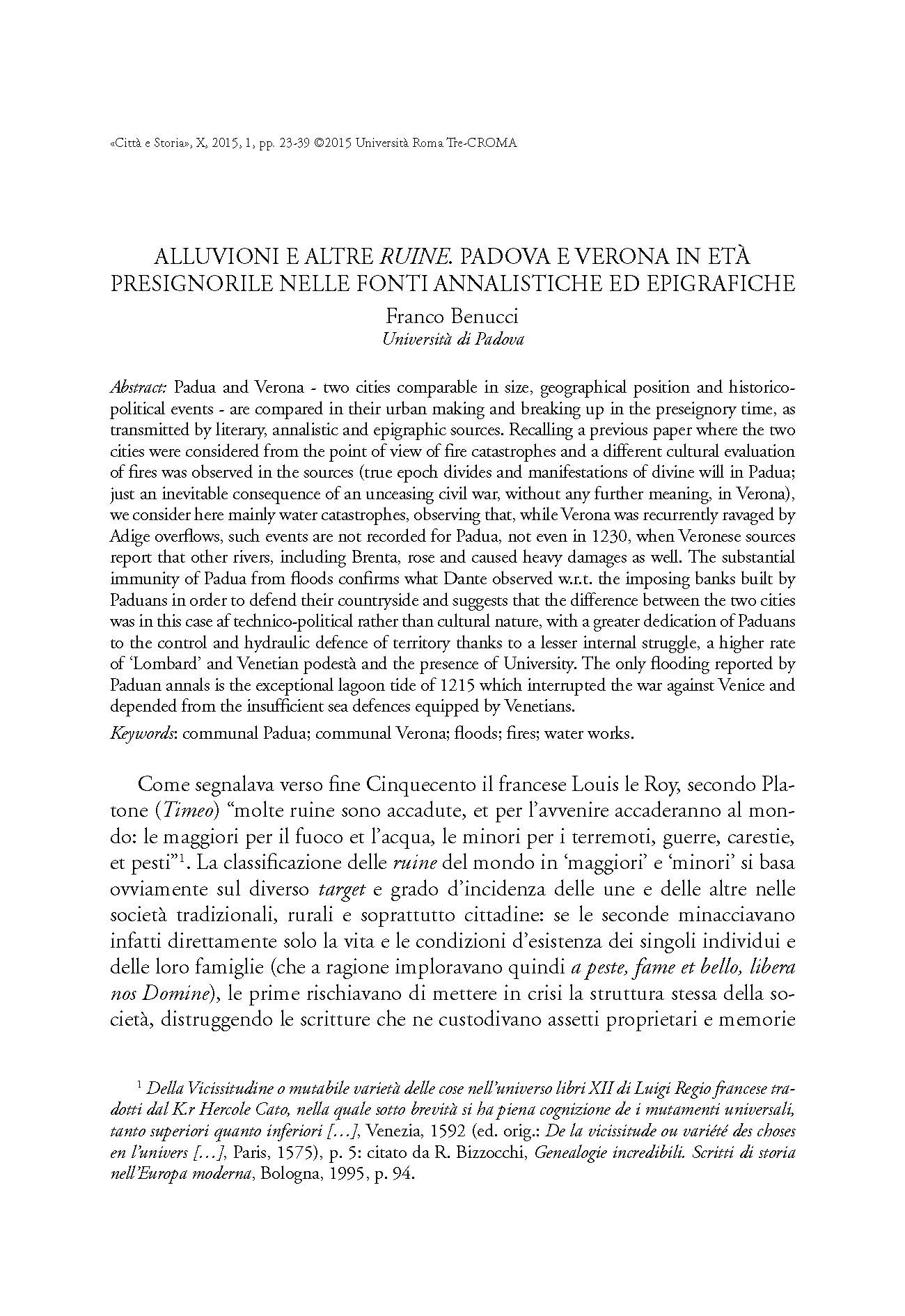Alluvioni e altre ruine. Padova e Verona in età presignorile nelle fonti annalistiche ed epigrafiche
6,00 €
Padua and Verona – two cities comparable in size, geographical position and historico- political events – are compared in their urban making and breaking up in the preseignory time, as transmitted by literary, annalistic and epigraphic sources. Recalling a previous paper where the two cities were considered from the point of view of fire catastrophes and a different cultural evaluation of fires was observed in the sources (true epoch divides and manifestations of divine will in Padua; just an inevitable consequence of an unceasing civil war, without any further meaning, in Verona), we consider here mainly water catastrophes, observing that, while Verona was recurrently ravaged by Adige overflows, such events are not recorded for Padua, not even in 1230, when Veronese sources report that other rivers, including Brenta, rose and caused heavy damages as well. the substantial immunity of Padua from floods confirms what Dante observed w.r.t. the imposing banks built by Paduans in order to defend their countryside and suggests that the difference between the two cities was in this case of technico-political rather than cultural nature, with a greater dedication of Paduans to the control and hydraulic defence of territory thanks to a lesser internal struggle, a higher rate of ‘Lombard’ and Venetian podestà and the presence of University. The only flooding reported by Paduan annals is the exceptional lagoon tide of 1215 which interrupted the war against Venice and depended from the insufficient sea defences equipped by Venetians.
Padua and Verona – two cities comparable in size, geographical position and historico- political events – are compared in their urban making and breaking up in the preseignory time, as transmitted by literary, annalistic and epigraphic sources. Recalling a previous paper where the two cities were considered from the point of view of fire catastrophes and a different cultural evaluation of fires was observed in the sources (true epoch divides and manifestations of divine will in Padua; just an inevitable consequence of an unceasing civil war, without any further meaning, in Verona), we consider here mainly water catastrophes, observing that, while Verona was recurrently ravaged by Adige overflows, such events are not recorded for Padua, not even in 1230, when Veronese sources report that other rivers, including Brenta, rose and caused heavy damages as well. the substantial immunity of Padua from floods confirms what Dante observed w.r.t. the imposing banks built by Paduans in order to defend their countryside and suggests that the difference between the two cities was in this case of technico-political rather than cultural nature, with a greater dedication of Paduans to the control and hydraulic defence of territory thanks to a lesser internal struggle, a higher rate of ‘Lombard’ and Venetian podestà and the presence of University. The only flooding reported by Paduan annals is the exceptional lagoon tide of 1215 which interrupted the war against Venice and depended from the insufficient sea defences equipped by Venetians.

